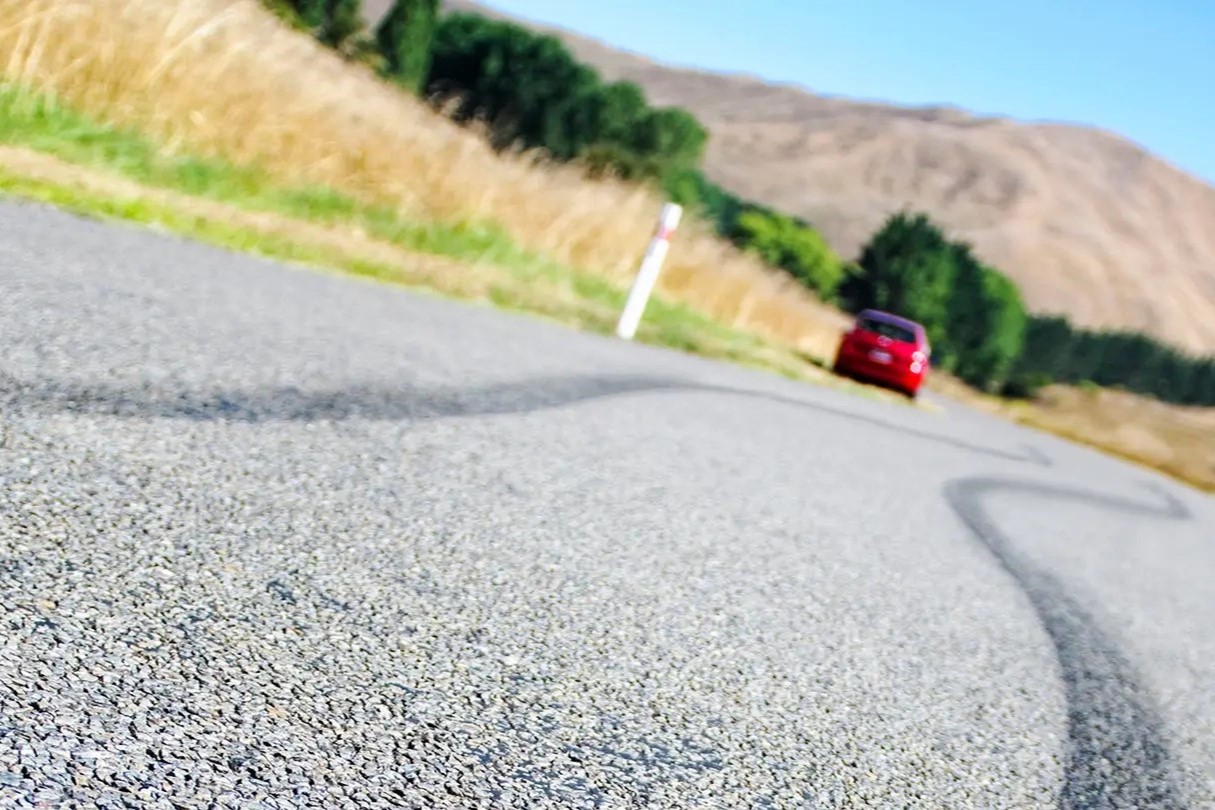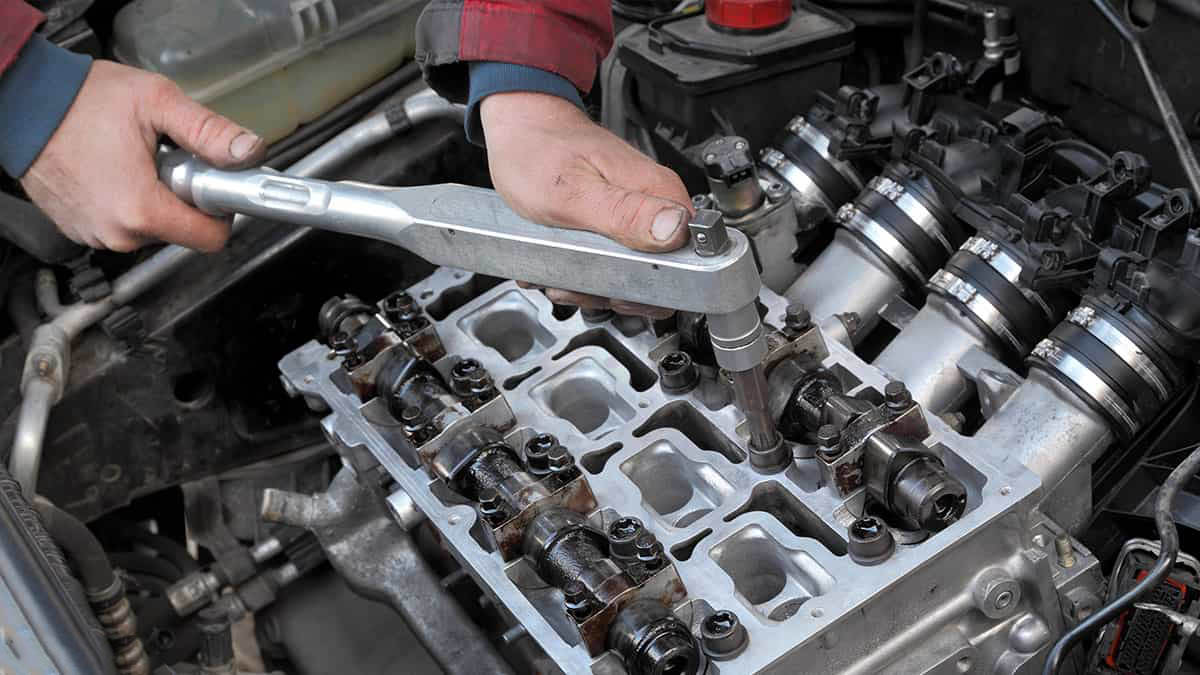Home>Automotive>The Ultimate Guide To Handling A Skidding Car


Automotive
The Ultimate Guide To Handling A Skidding Car
Modified: March 3, 2024
Learn how to handle a skidding car with our comprehensive guide. Expert tips and techniques for automotive safety. Be prepared for any situation on the road.
(Many of the links in this article redirect to a specific reviewed product. Your purchase of these products through affiliate links helps to generate commission for Noodls.com, at no extra cost. Learn more)
Table of Contents
Introduction
When it comes to driving, unexpected challenges can arise, and one of the most nerve-wracking situations a driver can face is a skidding car. Whether it's due to a sudden downpour, icy roads, or a sharp turn taken too quickly, a skid can happen in the blink of an eye, leaving even the most experienced drivers feeling a surge of panic. However, with the right knowledge and quick reflexes, handling a skidding car can be less daunting.
In this comprehensive guide, we will delve into the nuances of skidding, exploring its causes, types, prevention methods, and most importantly, how to effectively regain control when your car starts to skid. By understanding the intricacies of skidding and equipping yourself with the proper techniques, you can navigate through such precarious situations with confidence and composure.
So, fasten your seatbelt and get ready to gain valuable insights into handling a skidding car. Whether you're a seasoned driver or a novice behind the wheel, this guide will provide you with the knowledge and strategies to tackle skidding scenarios, ensuring that you stay safe on the road. Let's embark on this journey to unravel the mysteries of skidding and emerge as more skilled and confident drivers.
Understanding Skidding
Skidding, in the context of driving, refers to the loss of traction between the tires and the road surface, resulting in the vehicle sliding uncontrollably. This phenomenon occurs when the friction between the tires and the road is compromised, leading to a lack of grip and stability. Understanding the dynamics of skidding is crucial for drivers to effectively navigate through such precarious situations.
Skidding can occur due to various factors, including adverse weather conditions such as rain, snow, or ice, which reduce the grip between the tires and the road surface. Additionally, excessive speed, abrupt steering maneuvers, and sudden braking can also contribute to skidding. When a vehicle skids, the driver may experience a loss of steering control and find it challenging to maintain the intended direction of travel.
Furthermore, it's essential to recognize the distinction between understeer and oversteer, two common manifestations of skidding. Understeer occurs when the front tires lose traction, causing the vehicle to continue in a straight line despite steering input. On the other hand, oversteer arises when the rear tires lose grip, leading to the vehicle rotating more than intended.
By comprehending the dynamics of skidding, drivers can anticipate and respond to such situations effectively. Moreover, understanding the contributing factors and the specific type of skid can empower drivers to adopt preventive measures and execute corrective actions with confidence.
In essence, a thorough understanding of skidding encompasses the recognition of its causes, the differentiation between understeer and oversteer, and the implications of compromised traction. Armed with this knowledge, drivers can proactively mitigate the risk of skidding and react promptly and effectively when faced with this challenging scenario.
Causes of Skidding
Skidding can be attributed to a myriad of factors, each capable of compromising the traction between the tires and the road surface. Understanding these causes is pivotal in preempting and managing skidding scenarios effectively.
Adverse Weather Conditions
Inclement weather, such as heavy rain, snow, or ice, significantly diminishes the friction between tires and the road. The resulting decrease in grip can lead to the loss of control and trigger skidding. Rainwater creates a slick surface, reducing tire traction, while snow and ice introduce additional hazards, making it challenging for tires to maintain a firm grip on the road.
Excessive Speed
Driving at speeds higher than what the road and weather conditions permit can elevate the risk of skidding. When a vehicle is traveling too fast, the tires may struggle to maintain traction, especially when navigating through curves or making sudden maneuvers. The loss of grip due to excessive speed can prompt the onset of a skid, compromising the driver's ability to steer and control the vehicle effectively.
Abrupt Steering Maneuvers
Sharp and sudden steering inputs, especially at high speeds, can unsettle the balance of the vehicle and lead to skidding. Abruptly swerving to avoid an obstacle or making aggressive turns can overload the tires' grip capacity, causing them to lose traction and the vehicle to skid. Such maneuvers can disrupt the stability of the car, particularly if the tires are unable to maintain sufficient grip on the road surface.
Sudden Braking
Emergency or hard braking, especially on slippery or uneven road surfaces, can induce skidding. When the brakes are applied forcefully, the tires may lock up, causing the vehicle to slide uncontrollably. This loss of traction due to abrupt braking can result in the wheels skidding, impeding the driver's ability to steer and maintain control over the vehicle.
Inadequate Tire Tread or Condition
Worn-out or improperly inflated tires diminish their ability to maintain traction. Insufficient tire tread depth reduces the tire's grip on the road, especially in wet or slippery conditions, increasing the likelihood of skidding. Similarly, tires that are underinflated or overinflated compromise their contact patch with the road, affecting their ability to provide adequate grip and stability.
By recognizing these causes of skidding, drivers can proactively mitigate the risk of encountering such scenarios. Moreover, adopting preventive measures and exercising caution in challenging driving conditions can significantly reduce the likelihood of skidding, ensuring a safer and more controlled driving experience.
Types of Skids
Understanding the various types of skids is crucial for drivers to effectively identify and address these challenging situations. Skids can manifest in distinct forms, each with its unique characteristics and implications. By discerning the specific type of skid, drivers can employ the appropriate corrective measures to regain control and mitigate potential hazards.
Understeer (Front-Wheel Skid)
Understeer, also known as a front-wheel skid, occurs when the front tires lose traction, causing the vehicle to continue in a straight line despite steering input. This type of skid often arises when entering a corner or making a turn. When the front tires fail to grip the road surface adequately, the vehicle tends to plow forward, deviating from the intended path. Drivers may notice the steering wheel feeling unresponsive, and the vehicle may exhibit a tendency to drift wide in a turn. Understeer can be particularly challenging to manage, as the driver's ability to steer the vehicle in the desired direction is compromised.
Oversteer (Rear-Wheel Skid)
Conversely, oversteer, or a rear-wheel skid, occurs when the rear tires lose traction, causing the vehicle to rotate more than intended. This type of skid commonly transpires when exiting a sharp turn or maneuvering on slippery surfaces. Drivers may experience the rear end of the vehicle sliding outwards, leading to a sensation of the back end "coming around." Oversteer demands swift and precise corrective action to prevent the vehicle from spinning out of control. Managing oversteer requires a delicate balance of steering and throttle control to restore stability and alignment with the intended path.
All-Wheel Skid
An all-wheel skid, as the name suggests, involves a loss of traction across all four tires simultaneously. This type of skid can occur in diverse driving conditions, including icy roads, wet surfaces, or when encountering unexpected obstacles. An all-wheel skid presents a formidable challenge for drivers, as it compromises the vehicle's overall stability and maneuverability. Drivers may perceive a loss of control over the steering and braking systems, necessitating swift and decisive actions to rectify the skid and regain command over the vehicle.
By familiarizing themselves with the distinct characteristics of understeer, oversteer, and all-wheel skids, drivers can enhance their ability to recognize and respond to these challenging scenarios effectively. Moreover, acquiring the skills to address each type of skid empowers drivers to navigate through such situations with confidence and composure, ensuring a safer and more controlled driving experience.
How to Prevent Skidding
Preventing skidding is paramount for ensuring a safe and controlled driving experience. By adopting proactive measures and exercising caution, drivers can significantly reduce the likelihood of encountering skidding scenarios. Here are several effective strategies to prevent skidding:
Read more: How To Install Cabinet Handles
Maintain Proper Tire Traction
Ensuring that your vehicle's tires are in optimal condition is crucial for preventing skidding. Regularly inspect the tire tread depth and condition, as worn-out or underinflated tires diminish their ability to maintain traction. Additionally, equipping your vehicle with high-quality tires designed to provide enhanced grip on diverse road surfaces can substantially reduce the risk of skidding.
Adjust Driving Speed
Adapting your driving speed to suit the prevailing road and weather conditions is essential for preventing skidding. Reduce your speed when navigating through wet, icy, or slippery roads, as excessive speed can compromise tire traction and increase the likelihood of skidding. Maintaining a moderate and safe speed allows for better control and responsiveness, mitigating the risk of losing traction and skidding.
Anticipate and Respond to Hazards
Vigilance and anticipation are pivotal in preventing skidding. Stay alert for potential hazards such as sharp curves, uneven road surfaces, and slippery patches. By anticipating these challenges, drivers can adjust their speed and steering inputs proactively, reducing the risk of sudden skidding-inducing maneuvers.
Avoid Abrupt Steering and Braking
Smooth and gradual steering inputs and braking maneuvers contribute to maintaining tire traction and stability, thereby preventing skidding. Avoid abrupt and aggressive steering movements, especially at high speeds, as they can unsettle the vehicle's balance and lead to a loss of grip. Similarly, practice gentle and controlled braking to prevent the wheels from locking up and inducing a skid.
Utilize Advanced Vehicle Safety Features
Modern vehicles are equipped with advanced safety features designed to enhance traction and stability, thereby reducing the risk of skidding. Utilize technologies such as electronic stability control (ESC), traction control systems, and antilock braking systems (ABS) to bolster your vehicle's ability to navigate challenging driving conditions and prevent skidding.
By integrating these preventive strategies into your driving habits, you can minimize the likelihood of encountering skidding scenarios, fostering a safer and more controlled driving environment for yourself and other road users. Proactive maintenance, cautious driving practices, and leveraging advanced safety technologies collectively contribute to mitigating the risk of skidding, allowing drivers to traverse diverse road conditions with confidence and poise.
What to Do When Your Car Starts to Skid
Experiencing a skid while driving can be a heart-pounding moment, but knowing how to react promptly and effectively is crucial for regaining control and averting potential hazards. When your car starts to skid, it's essential to remain calm and execute the following steps to navigate through this challenging situation:
Maintain Composure and Avoid Panic
As soon as you detect that your car is skidding, it's natural to feel a surge of panic. However, it's imperative to stay composed and refrain from making sudden, erratic movements. Panicking can exacerbate the skid and hinder your ability to respond effectively. Take a deep breath and focus on implementing the necessary corrective actions.
Steer in the Direction of the Skid
If your vehicle is experiencing an understeer, or front-wheel skid, wherein the front tires lose traction and the car continues in a straight line despite steering input, gently steer in the direction of the skid. This means turning the steering wheel in the same direction that the front of the vehicle is sliding. By doing so, you can help the front tires regain traction and align the vehicle with the intended path.
Read more: How To Replace A Toilet Handle
Countersteer to Correct Oversteer
In the case of an oversteer, or rear-wheel skid, where the rear tires lose traction and the vehicle begins to rotate more than intended, countersteer by turning the steering wheel in the direction opposite to the skid. This corrective action can help stabilize the vehicle and prevent it from spinning out of control. It's crucial to apply gentle and precise steering inputs to gradually restore stability.
Avoid Abrupt Braking or Acceleration
Refrain from slamming on the brakes or accelerating forcefully when your car is skidding. Abrupt braking can cause the wheels to lock up, exacerbating the skid, while aggressive acceleration can further unsettle the vehicle. Instead, focus on maintaining a steady and controlled throttle position to help regain traction and stability.
Regain Traction and Control
As the vehicle begins to regain traction and the skid subsides, gradually steer the car back onto the intended path. Once stability is restored, continue driving at a moderate speed, remaining vigilant for any residual hazards or slippery road conditions.
By adhering to these guidelines and practicing these corrective measures, drivers can effectively navigate through skidding scenarios and regain control over their vehicles. It's essential to remain attentive and composed, as swift and precise actions can make a pivotal difference in averting potential accidents and ensuring a safe driving experience.
Recovering from a Skid
Recovering from a skid demands swift reflexes, precise actions, and a composed mindset. When faced with a skidding scenario, drivers must promptly execute the appropriate recovery techniques to regain control and avert potential hazards.
As soon as the skid is detected, maintaining composure is paramount. Panic can exacerbate the situation, hindering the driver's ability to respond effectively. With a calm demeanor, the driver can focus on implementing the necessary corrective measures to steer the vehicle back to stability.
In the event of an understeer, or front-wheel skid, where the front tires lose traction and the vehicle continues in a straight line despite steering input, gently steering in the direction of the skid is crucial. This means turning the steering wheel in the same direction that the front of the vehicle is sliding. By doing so, the driver can assist the front tires in regaining traction, aligning the vehicle with the intended path.
Conversely, when encountering an oversteer, or rear-wheel skid, where the rear tires lose traction and the vehicle begins to rotate more than intended, countersteering is essential. This involves turning the steering wheel in the direction opposite to the skid. Through precise countersteering, the driver can stabilize the vehicle and prevent it from spinning out of control.
Throughout the recovery process, it's imperative to avoid abrupt braking or acceleration, as these actions can exacerbate the skid. Instead, maintaining a steady and controlled throttle position aids in regaining traction and stability.
As the vehicle begins to regain traction and the skid subsides, gradual steering adjustments can guide the car back onto the intended path. Once stability is restored, the driver should continue driving at a moderate speed, remaining vigilant for any residual hazards or slippery road conditions.
By adhering to these recovery techniques, drivers can effectively navigate through skidding scenarios and regain control over their vehicles. Swift and precise actions, coupled with a composed mindset, are instrumental in averting potential accidents and ensuring a safe driving experience.
Conclusion
In conclusion, mastering the art of handling a skidding car is a pivotal skill for every driver. By delving into the intricacies of skidding, understanding its causes, types, preventive measures, and effective recovery techniques, drivers can bolster their ability to navigate through challenging scenarios with confidence and composure.
Skidding, characterized by the loss of traction between the tires and the road surface, can stem from various factors, including adverse weather conditions, excessive speed, abrupt steering maneuvers, and inadequate tire conditions. Recognizing the distinct types of skids, such as understeer, oversteer, and all-wheel skids, empowers drivers to respond effectively to each scenario, mitigating potential hazards and regaining control over their vehicles.
Preventing skidding is paramount in fostering a safe driving environment. Maintenance of optimal tire traction, adaptation of driving speed to prevailing conditions, anticipation of potential hazards, and the utilization of advanced vehicle safety features collectively contribute to minimizing the likelihood of encountering skidding scenarios.
When faced with a skidding car, maintaining composure, executing precise corrective actions, and avoiding panic-induced maneuvers are pivotal for regaining control and averting potential accidents. Swift and precise responses, combined with a composed mindset, are instrumental in navigating through skidding scenarios with confidence and ensuring a safe driving experience.
In essence, by internalizing the insights and strategies presented in this guide, drivers can elevate their preparedness and proficiency in handling skidding scenarios. Embracing a proactive approach to preventative measures, fostering a keen understanding of skidding dynamics, and honing the skills required to recover from skids collectively contribute to fostering a safer and more controlled driving experience for all road users.
Ultimately, by equipping oneself with the knowledge and techniques to effectively handle skidding scenarios, drivers can traverse diverse road conditions with resilience and confidence, ensuring that they remain safe and secure behind the wheel.









